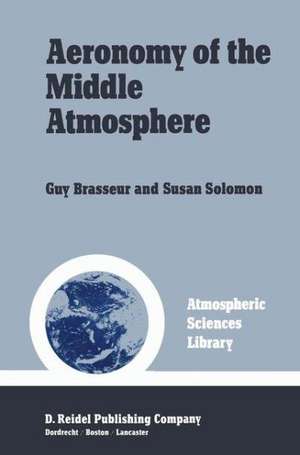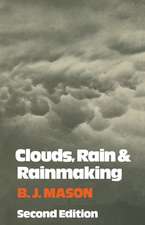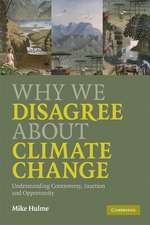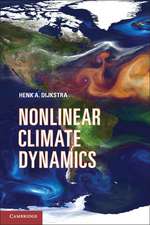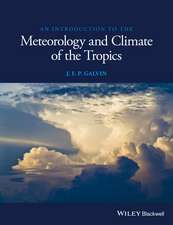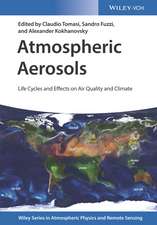Aeronomy of the Middle Atmosphere: Chemistry and Physics of the Stratosphere and Mesosphere: Atmospheric Sciences Library
Autor Guy Brasseuren Limba Engleză Paperback – 12 noi 2011
Preț: 705.18 lei
Preț vechi: 829.63 lei
-15% Nou
Puncte Express: 1058
Preț estimativ în valută:
134.94€ • 144.29$ • 112.51£
134.94€ • 144.29$ • 112.51£
Carte tipărită la comandă
Livrare economică 18 aprilie-02 mai
Preluare comenzi: 021 569.72.76
Specificații
ISBN-13: 9789400964037
ISBN-10: 940096403X
Pagini: 464
Ilustrații: XVI, 444 p.
Dimensiuni: 155 x 235 x 24 mm
Greutate: 0.65 kg
Ediția:Softcover reprint of the original 1st ed. 1984
Editura: SPRINGER NETHERLANDS
Colecția Springer
Seria Atmospheric Sciences Library
Locul publicării:Dordrecht, Netherlands
ISBN-10: 940096403X
Pagini: 464
Ilustrații: XVI, 444 p.
Dimensiuni: 155 x 235 x 24 mm
Greutate: 0.65 kg
Ediția:Softcover reprint of the original 1st ed. 1984
Editura: SPRINGER NETHERLANDS
Colecția Springer
Seria Atmospheric Sciences Library
Locul publicării:Dordrecht, Netherlands
Public țintă
ResearchCuprins
1. The Middle Atmosphere and Its Evolution.- 1.1 Introduction.- 1.2 Evolution of the Earth’s atmosphere.- 1.3 Possible perturbations.- References.- 2. Chemical Concepts in the Atmosphere.- 2.1 Introduction.- 2.2 Thermodynamic considerations.- 2.3 Elementary chemical kinetics.- 2.4 Term symbols and their use.- 2.5 Photolysis processes.- 2.6 Excited species in the middle atmosphere.- References and bibliography.- 3. Structure and Dynamics.- 3.1 Introduction.- 3.2 Vertical structure and some observed dynamical characteristics.- 3.3 Fundamental description of atmospheric dynamics.- 3.4 Effects of dynamics on chemical species.- 3.5 General circulation models.- 3.6 Dynamics of the stratosphere in two dimensions: a conceptual view.- 3.7 The importance of wave transience and dissipation.- 3.8 One-dimensional representations of the atmosphere.- References.- 4. Radiation.- 4.1 Introduction.- 4.2 Solar radiation at the top of the atmosphere.- 4.3 Attenuation of solar radiation in the atmosphere.- 4.4 Radiative transfer.- 4.5 Thermal effects of radiation.- 4.6 Photochemical effects of radiation.- References.- 5. Composition and Chemistry.- 5.1 General.- 5.2 Oxygen compounds.- 5.3 Carbon compounds.- 5.4 Hydrogen compounds.- 5.5 Nitrogen compounds.- 5.6 Chlorine compounds.- 5.7 Other halogens.- 5.8 Sulfur compounds and formation of aerosol.- 5.9 Generalized ozone balance.- References.- 6. The Ions.- 6.1 Introduction.- 6.2 Formation of ions in the middle atmosphere.- 6.3 Positive ion chemistry.- 6.4 Negative ion chemistry.- 6.5 Effect of ionic processes on neutral constituents.- 6.6 Radio waves in the lower ionosphere.- References.- 7. Possible Perturbations and Atmospheric Responses.- 7.1 Introduction.- 7.2 The importance of coupling in the study of perturbations.- 7.3 The effectof changes in the solar irradiance.- 7.4 Particle precipitation.- 7.5 Volcanic emissions.- 7.6 Anthropogenic emissions.- References.- Appendix A. Numerical values of physical constants and other data.- Appendix B. Conversion factors.
